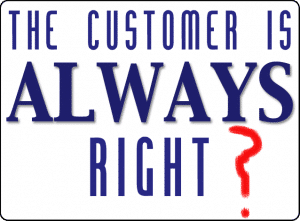Sadly, in the world we live in, websites are always under threat of attack from hackers and people with negative intent. A good example of this happened the other day. The company which houses my dedicated server was down for almost 24 hours. They claimed it was due to a firmware update in their main data center. Now whether that’s true, or they were hacked and they just can’t tell you for security reasons, the result was the same. My site was down as were many of my customers who are on that particular server. Unfortunately with hundreds of thousands of sites affected, it is very hard to get in touch with hosting companies. Live chat went down as they couldn’t handle the volume, and forget about phones as you sat on hold for hours.

The problem is that since emergencies don’t happen all the time (Thankfully), people don’t always know where to turn. For me this is a question of educating my clients. In my next email to my client list, I will be instructing people what to do in the event their website is down and/or email. Unfortunately one of the first thing that happens is people want to go in and change email settings. I always instruct people to first make sure their websites are up and running before mucking around with your email. Typically your email settings don’t change very often. So they should leave them alone unless they speak with me.
Managing websites is about communication. In this day and age you need to have alternate forms of communication as well. Social media is perfect as most people are on either Facebook or Twitter and both have an excellent up time records.
The old adage, “the customer is always right” is of course a good business practice. But is it correct?
No, not always.
Sounds revolutionary right? Not really, hear me out.
As a web development professional, your duty is to do the right thing by your clients. You should always recommend the best course of action. You should never just rubber-stamp an idea just because it belongs to your client. Now of course, you are in business and you need to please your customers. But don’t be a sycophant. Tell them your opinion as to what they should do. Now of course if they choose to go against you, that is up to them. At that point you need to back off.
Of course you want an example of this correct?
Okay, here’s a case that illustrates what I’m talking about. I had a client who wanted to go with a custom designed, responsive WordPress web site. Now, I love building these websites. We build quite a few of these types of sites, and most of the time I think it’s a fabulous idea. But, in this case, the client was a nonprofit, just starting out with very little funding. I knew that I could save them a lot of money, and build a kick ass website using a premium theme. With several thousand available, that are responsive and very high-quality, this was a better way for them to go. As they were in a rush to get this up and running, the premium theme would be much quicker to market. The design process adds quite a bit of time, and then of course we have to build out the WordPress theme. Now, most companies would love to go with the more expensive solution and would never even suggest a cheaper alternative. But at RooSites, we have built a company based on doing the right thing, even if it costs us money in the short term. Why? Not because we’re such amazing human beings. It is a business strategy, to take a long view and build long-term relationships based on trust.
Bottom line: The adage that the customer is always right is not necessarily true. Do the right thing by them, give your recommendations and let them decide. You and your customers will profit in the long term.